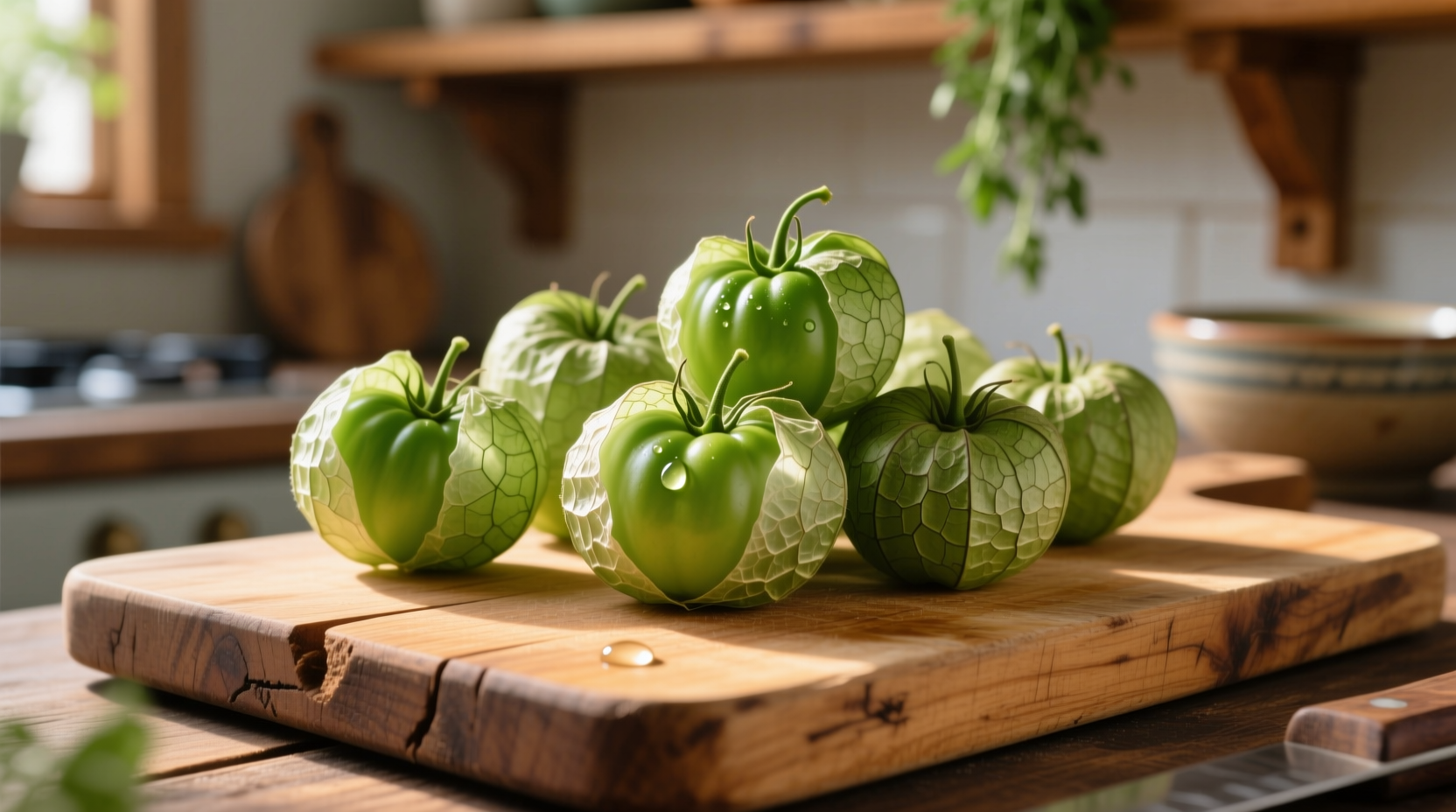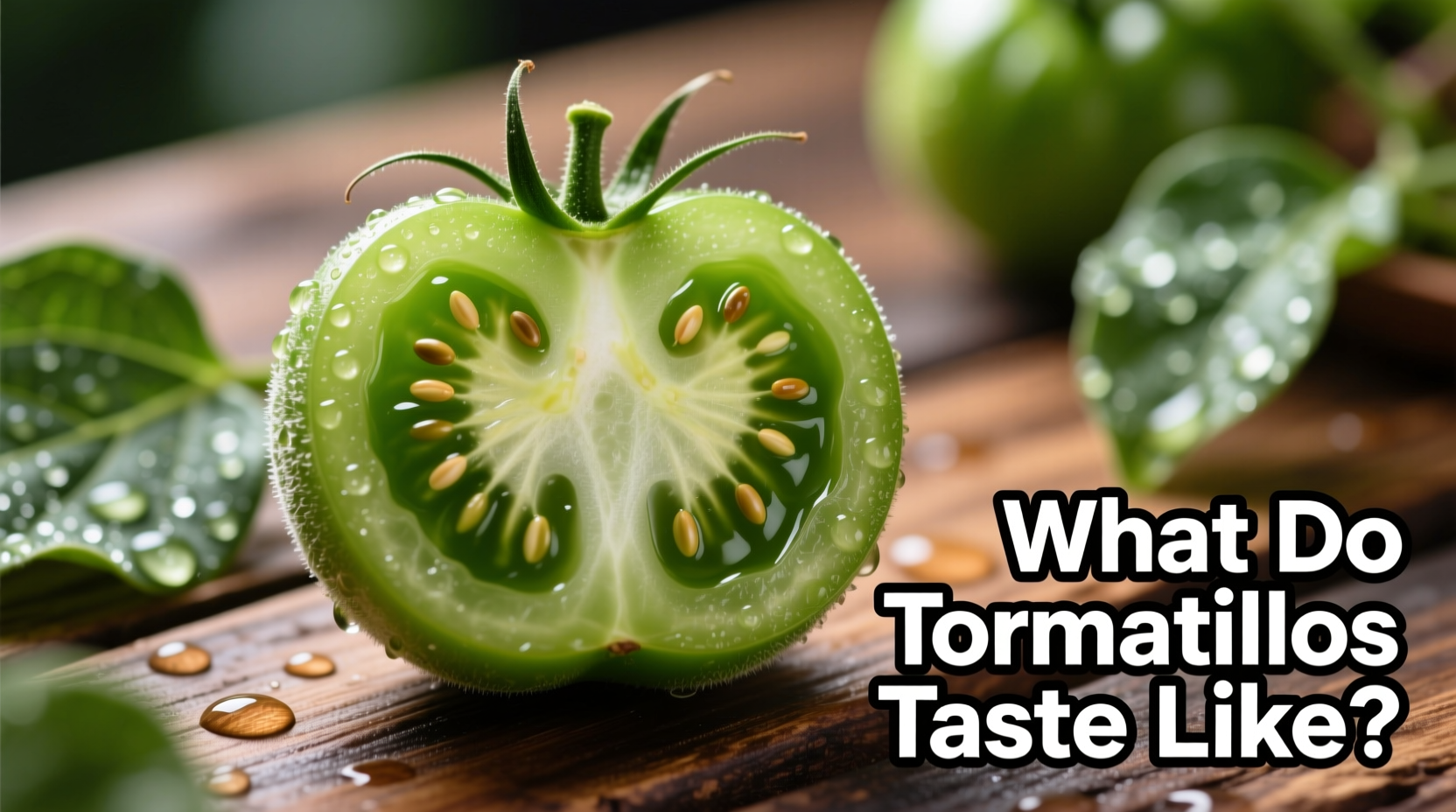Unlock the Secret Flavor of Tomatillos: Your Complete Taste Guide
If you've ever wondered what do tomatillos taste like when you see them wrapped in papery husks at the grocery store, you're not alone. These small green fruits (yes, technically fruits!) are culinary gems that add a distinctive tang to dishes. Understanding their flavor profile helps you use them effectively in your cooking.
What Exactly Makes Tomatillos Taste the Way They Do?
Tomatillos contain natural acids that create their signature tartness, with malic acid (also found in green apples) being predominant. Unlike tomatoes, they lack lycopene, which explains their green color and different flavor chemistry. When you bite into a raw tomatillo, you'll experience:
- A refreshing citrus-like acidity that wakes up your palate
- Subtle herbal notes reminiscent of fresh herbs
- A firm, slightly dense texture compared to ripe tomatoes
- Minimal sweetness—they're not meant to be eaten like sweet fruits
According to agricultural research from the University of California, Davis, the specific compounds contributing to tomatillo flavor include volatile organic compounds that create those distinctive grassy and herbal notes not found in regular tomatoes.
Tomatillo vs. Tomato: Understanding the Taste Differences
| Characteristic | Tomatillo | Green Tomato |
|---|---|---|
| Primary Flavor | Bright, tart, citrusy | Mildly acidic, vegetal |
| Sweetness Level | Very low | Moderate |
| Texture When Raw | Firm, dense | Softer, juicier |
| Best Culinary Use | Salsas, stews, braises | Fried dishes, chutneys |
This comparison explains what do tomatillos taste like compared to tomatoes—while both are in the nightshade family, their flavor profiles differ significantly. Green tomatoes have more sugar and less complex acidity, making them better suited for frying rather than the raw salsas where tomatillos shine.

How Ripeness Changes Tomatillo Flavor
The taste of tomatillos evolves as they ripen, creating different culinary opportunities:
- Underripe (bright green): Maximum tartness, firm texture—ideal for classic salsas verdes
- Mid-ripeness (yellow-green): Balanced tartness and subtle sweetness—great for sauces needing complexity
- Full ripeness (purple or yellow): Noticeable sweetness with reduced acidity—perfect for jams or fruit salsas
Research from the USDA Agricultural Research Service confirms that as tomatillos mature, their sugar content increases while malic acid decreases, creating this flavor evolution. Most grocery stores sell them at the bright green stage for maximum tartness in traditional applications.
Cooking Transformations: Raw vs. Roasted Tomatillos
Understanding how tomatillos taste when cooked versus raw is crucial for recipe success. The cooking method dramatically alters their flavor profile:
- Raw: Maximum tartness and bright green flavor—perfect for fresh salsas
- Boiled: Muted acidity, softer herbal notes—traditional for some regional salsas
- Roasted/Broiled: Caramelized edges, deeper flavor with reduced tartness—adds complexity to sauces
- Grilled: Smoky undertones that complement the natural tartness—ideal for summer dishes
Food science studies show that roasting breaks down some of the malic acid while developing new flavor compounds through the Maillard reaction, creating that richer, more complex taste profile many chefs prefer for sophisticated dishes.
Practical Tips for Using Tomatillos in Your Cooking
Now that you understand what flavor do tomatillos add to salsa and other dishes, here's how to maximize their potential:
- Always remove the husk and rinse off the sticky residue before using
- For maximum tartness in salsas, use raw tomatillos with minimal cooking
- To mellow the acidity, roast or boil them before blending
- Balance the tartness with a pinch of sugar or honey in cooked sauces
- Store properly in their husks in a paper bag in the refrigerator for up to two weeks
Professional chefs like those at the Culinary Institute of America note that the sticky coating on raw tomatillos contains additional flavor compounds, so thorough rinsing is essential before use to avoid any bitterness in your final dish.
Why Tomatillos Are Worth Seeking Out
While you might wonder why do tomatillos taste tart compared to other ingredients, this very characteristic makes them irreplaceable in certain dishes. Their unique combination of acidity and herbal notes creates a flavor dimension that tomatoes simply can't replicate. When authentic Mexican recipes call for tomatillos, substituting green tomatoes will yield noticeably different results—usually lacking that distinctive bright complexity.
Understanding the specific flavor profile of tomatillos helps you make informed decisions in the kitchen. Whether you're crafting the perfect salsa verde, building complex moles, or experimenting with new recipes, knowing exactly what do tomatillos taste like ensures your dishes achieve authentic flavor balance.











 浙公网安备
33010002000092号
浙公网安备
33010002000092号 浙B2-20120091-4
浙B2-20120091-4